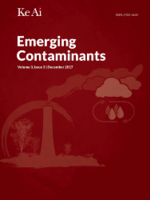
Emerging Contaminants
Scope & Guideline
Pioneering research for a sustainable tomorrow.
Introduction
Aims and Scopes
- Identification and Risk Assessment of Emerging Contaminants:
The journal emphasizes the identification and risk assessment of emerging contaminants such as pharmaceuticals, pesticides, heavy metals, and microplastics, focusing on their adverse effects on human health and the environment. - Ecological Impact Studies:
Research published in this journal often includes ecological risk assessments, exploring how emerging contaminants affect biodiversity, ecosystem health, and species interactions. - Innovative Analytical Techniques:
Papers frequently introduce novel methodologies for detecting and quantifying emerging contaminants, including advanced analytical techniques such as mass spectrometry and chromatography. - Bioremediation and Treatment Technologies:
The journal covers studies on innovative treatment technologies and bioremediation strategies aimed at mitigating the impacts of emerging contaminants in various environments, including wastewater treatment and soil remediation. - Public Health Implications:
Research often connects environmental contamination with public health outcomes, providing insights into exposure pathways and potential health risks associated with specific contaminants.
Trending and Emerging
- Microplastics and Their Ecotoxicological Effects:
Recent publications indicate a growing concern regarding microplastics, their distribution in various environments, and their potential toxic effects on aquatic and terrestrial organisms. - Antimicrobial Resistance Related to Emerging Contaminants:
There is an increasing emphasis on the relationship between emerging contaminants and the rise of antimicrobial resistance, highlighting the implications for public health and environmental management. - PFAS and Their Environmental Persistence:
Research on per- and polyfluoroalkyl substances (PFAS) has surged, focusing on their persistence in the environment, sources, and health risks, reflecting a heightened awareness of their global impact. - Nanomaterials and Their Ecotoxicological Assessments:
The exploration of nanomaterials as emerging pollutants is gaining traction, particularly concerning their environmental fate and potential health implications. - Integrated Risk Assessment Approaches:
Emerging trends include the use of integrated risk assessment frameworks that consider multiple contaminants and their cumulative effects on human health and the environment.
Declining or Waning
- Traditional Contaminants:
There is a noticeable decrease in publications focusing solely on traditional contaminants such as heavy metals and organochlorine pesticides, as the focus shifts toward more complex and multifaceted emerging contaminants. - Historical Pollution Case Studies:
Research centered on historical pollution events and their long-term impacts is becoming less frequent, as the journal increasingly prioritizes contemporary and emerging issues. - Localized Studies:
While localized studies on specific regions have been a staple, there seems to be a decline in this approach in favor of global or comparative studies that address broader trends and impacts.
Similar Journals
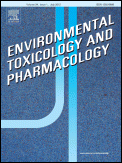
Environmental Toxicology and Pharmacology
Innovating research in environmental health dynamics.Environmental Toxicology and Pharmacology, published by Elsevier, is a leading journal dedicated to advancing our understanding of the effects of environmental pollutants on biological systems. With an ISSN of 1382-6689 and an E-ISSN of 1872-7077, this journal covers a wide range of studies related to toxicology, pharmacology, and environmental health. The journal is classified as Q2 in key categories such as Health, Toxicology and Mutagenesis and Medicine (miscellaneous), and sits impressively in Q1 for Toxicology, reflecting its strong impact in the field. As of 2023, it ranks #30 out of 133 in Toxicology and #40 out of 148 in Health, indicating its high relevance and contribution to research. While the journal is not currently open access, it remains a pivotal resource for researchers, professionals, and students seeking to explore the intricacies of environmental health effects. Its commitment to publishing high-quality peer-reviewed research positions it as a crucial platform for scientific dialogue and discovery.

Journal of Xenobiotics
Pioneering research in environmental and biological systems.Journal of Xenobiotics, published by MDPI in Switzerland, is an esteemed open-access journal dedicated to advancing the understanding of xenobiotic substances and their impact on environmental health and biological systems. Since its inception in 2011, the journal has made significant strides in the field, earning a prestigious Q1 ranking across categories such as Pharmacology, Pollution, and Toxicology in 2023, showcasing its pivotal role in disseminating high-quality research. With its recent Scopus rankings reflecting a solid position in Environmental Science and Pharmacology disciplines, the journal serves as a vital platform for researchers, professionals, and students interested in the mechanisms and consequences of pollutants and toxic substances in various settings. The Journal of Xenobiotics continuously fosters open collaboration and knowledge exchange, allowing for inclusive dialogue on contemporary issues, making its articles readily accessible for the global scientific community.
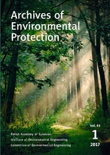
Archives of Environmental Protection
Advancing the Frontiers of Environmental KnowledgeArchives of Environmental Protection, published by the Polish Academy of Sciences, is a pivotal journal in the field of Environmental Science. With an ISSN of 2083-4772 and E-ISSN of 2083-4810, this journal serves as a critical platform for disseminating innovative research and comprehensive reviews that address the complexities surrounding environmental issues. As of 2023, it holds a respectable Q3 ranking in Environmental Science, reflecting its relevance and contribution to the academic community, indicated by a Scopus rank of 124 out of 233 in the General Environmental Science category. Although it operates without Open Access, the journal's consistent publication from 2007 to 2024 emphasizes its commitment to advancing knowledge in diverse areas of environmental protection. Researchers, professionals, and students are encouraged to engage deeply with the wealth of insights offered through the rigorous peer-reviewed articles presented in this journal, which strive to foster sustainable practices and environmental stewardship.
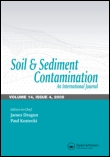
SOIL & SEDIMENT CONTAMINATION
Pioneering research in the fight against environmental contamination.SOIL & SEDIMENT CONTAMINATION is an esteemed journal published by Taylor & Francis Inc, focusing on critical research in the realms of environmental chemistry, soil science, and pollution. With an ISSN of 1532-0383 and an E-ISSN of 1549-7887, the journal serves as a vital platform for disseminating innovative studies from 1996 to 2024, offering insights that are pivotal to both academic and professional communities. Operating from the United Kingdom, this journal holds a respectable ranking within Q3 in Environmental Chemistry and Health, Toxicology and Mutagenesis, and Q2 in Soil Science as of 2023, indicating its significance in the respective fields. Researchers and professionals are encouraged to explore the journal's open access options, enhancing visibility and access to groundbreaking studies on soil and sediment contamination. With a Scopus ranking placing it in the 66th percentile for Soil Science and substantial contributions to understanding environmental pollutants, SOIL & SEDIMENT CONTAMINATION is essential for those dedicated to advancing the science and remediation of contaminated environments.
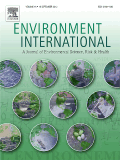
ENVIRONMENT INTERNATIONAL
Uncovering the Science Behind Sustainable DevelopmentENVIRONMENT INTERNATIONAL is a premier journal dedicated to advancing the field of environmental science. Published by PERGAMON-ELSEVIER SCIENCE LTD, it boasts an impressive impact factor and holds a prestigious Q1 classification in the Environmental Science category, reflecting its influence and reputation within academia. Since transitioning to Open Access in 2019, the journal has increased its accessibility, allowing a wider audience—from researchers to industry professionals—to engage with cutting-edge studies that address crucial environmental challenges. With a Scopus rank of #3 out of 233 in General Environmental Science and a commendable 98th percentile, ENVIRONMENT INTERNATIONAL is committed to publishing high-quality research that informs policy and practice. Covering a broad spectrum of topics from pollution and climate change to sustainable development, this journal serves as a vital resource for those dedicated to making a positive impact on our planet. For submissions, inquiries, or to explore its extensive archives dating from 1976 to 2024, please visit their site at the Kidlington, Oxford headquarters.
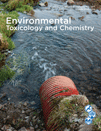
ENVIRONMENTAL TOXICOLOGY AND CHEMISTRY
Pioneering research for a safer, cleaner environment.ENVIRONMENTAL TOXICOLOGY AND CHEMISTRY is a premier journal published by Wiley that has established itself as an essential resource for researchers, professionals, and students in the fields of environmental chemistry and toxicology. With a robust trajectory since its inception in 1982, the journal offers critical insights into the interactions between environmental pollutants and biological systems, aiming to advance our understanding of the impacts of toxins on health and ecosystems. Recognized in the top quartile (Q1) of both Environmental Chemistry and Health, Toxicology, and Mutagenesis categories as of 2023, the journal is respected for its rigorous peer-reviewed content and high impact factor. It ranks 33rd out of 148 in Health, Toxicology and Mutagenesis and 48th out of 147 in Environmental Chemistry according to Scopus metrics, placing it firmly within the most influential publications in these fields. Although it does not currently offer open access, the journal remains a vital conduit for disseminating cutting-edge research and innovative methodologies that address pressing environmental challenges.
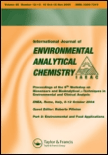
INTERNATIONAL JOURNAL OF ENVIRONMENTAL ANALYTICAL CHEMISTRY
Driving innovation in environmental analysis.INTERNATIONAL JOURNAL OF ENVIRONMENTAL ANALYTICAL CHEMISTRY, published by Taylor & Francis Ltd, stands as an essential resource in the interdisciplinary field of environmental science and analytical chemistry. With a history dating back to 1971 and a convergence period extending to 2024, this journal addresses urgent global challenges by providing a platform for high-quality research that encompasses pivotal aspects of environmental analysis, pollution, and public health. The journal’s significant impact is reflected in its 2023 rankings, placing it in the second and third quartiles across various relevant categories, including Analytical Chemistry, Environmental Chemistry, and Water Science and Technology. Researchers and practitioners are encouraged to contribute to its wealth of knowledge, making it a vital reference for emerging studies in Health, Toxicology and Mutagenesis and beyond. Although it is not an open-access journal, subscriptions provide unparalleled access to groundbreaking research that can influence both academia and industry practices.
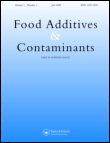
Food Additives & Contaminants Part B-Surveillance
Innovating the discourse on food health and safety.Food Additives & Contaminants Part B-Surveillance, published by Taylor & Francis Ltd, is a premier journal dedicated to the rigorous analysis and surveillance of food additives and contaminants. With an ISSN of 1939-3210 and an E-ISSN of 1939-3229, this journal caters to a global audience, addressing crucial issues in the fields of Food Science, Public Health, and Toxicology. Recognized for its substantial contribution to these areas, it holds a Q2 ranking in both Food Science and Public Health, demonstrating its influence and relevance with an increasing audience within the scientific community. The journal publishes critical research from 2008 onwards and continues its commitment to advancing knowledge up to 2024. Ideal for researchers, practitioners, and students, Food Additives & Contaminants Part B-Surveillance serves as a vital platform for sharing innovative findings and fostering discussions that promote food safety and public health.
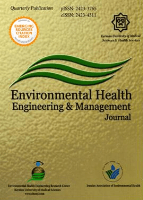
Environmental Health Engineering and Management Journal
Innovating Strategies for Environmental Health ManagementEnvironmental Health Engineering and Management Journal is a premier platform dedicated to the dissemination of research findings in the essential field of environmental health. Published by Kerman University of Medical Sciences in Iran, this Open Access journal has been a beacon of scientific inquiry since its inception in 2014. With an ISSN of 2423-3765 and E-ISSN 2423-4311, it facilitates broad accessibility to cutting-edge research that addresses the complex interactions between environmental factors and human health. With a notable categorization in the Q3 quartile for Environmental Science and Public Health, alongside Q4 in Chemical Health and Safety, the journal underscores its commitment to quality and relevance. Currently ranked #132 out of 233 in Environmental Science within Scopus, it serves as a crucial resource for researchers and practitioners striving to tackle contemporary environmental challenges. The journal's scope includes innovative methodologies, environmental risk assessment, and sustainable health practices, positioning it as an indispensable reference for those invested in improving public health outcomes through environmental engineering and management.

ECOTOXICOLOGY
Innovating solutions for a cleaner, healthier environment.ECOTOXICOLOGY is a prominent journal published by Springer, focusing on the interdisciplinary field of ecotoxicology—a critical area dedicated to understanding the impact of chemicals and pollutants on ecosystems and human health. Established in 1992, the journal has steadily gained recognition and currently holds a strong position in the academic landscape, featuring a Q2 ranking across multiple categories including Health, Toxicology and Mutagenesis, and Environmental Science. With its rigorous peer-review process and commitment to high-quality research, ECOTOXICOLOGY serves as an essential platform for disseminating innovative studies, systematic reviews, and policy analyses, thereby contributing significantly to environmental management and law. Although it does not offer open access, authors benefit from the reach and reputation of Springer, ensuring their work is seen by an engaged audience of researchers, professionals, and academics. As the field of ecotoxicology continues to evolve, ECOTOXICOLOGY remains at the forefront, addressing key challenges and solutions essential for safeguarding our environment and public health.